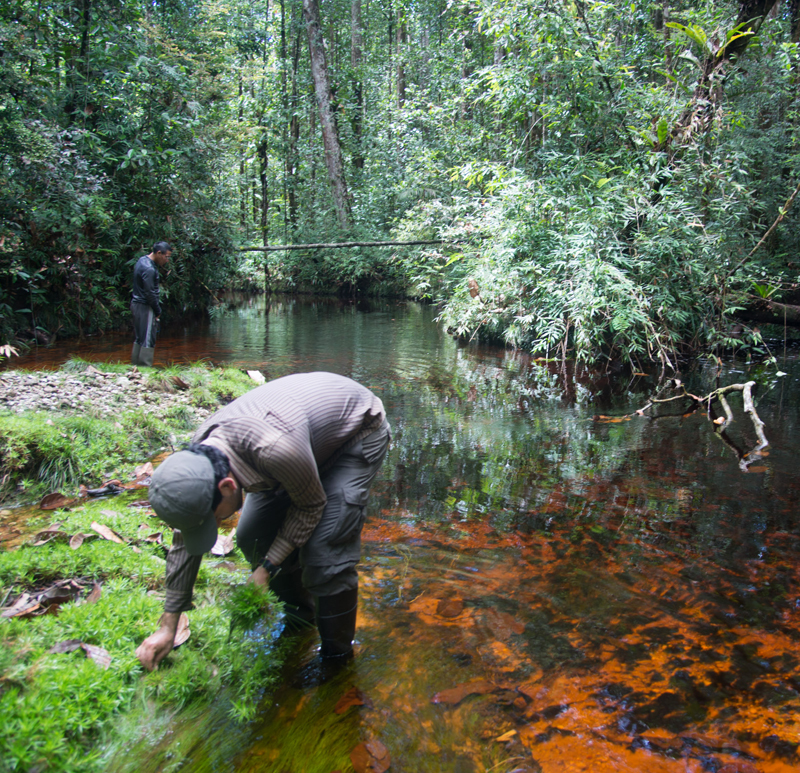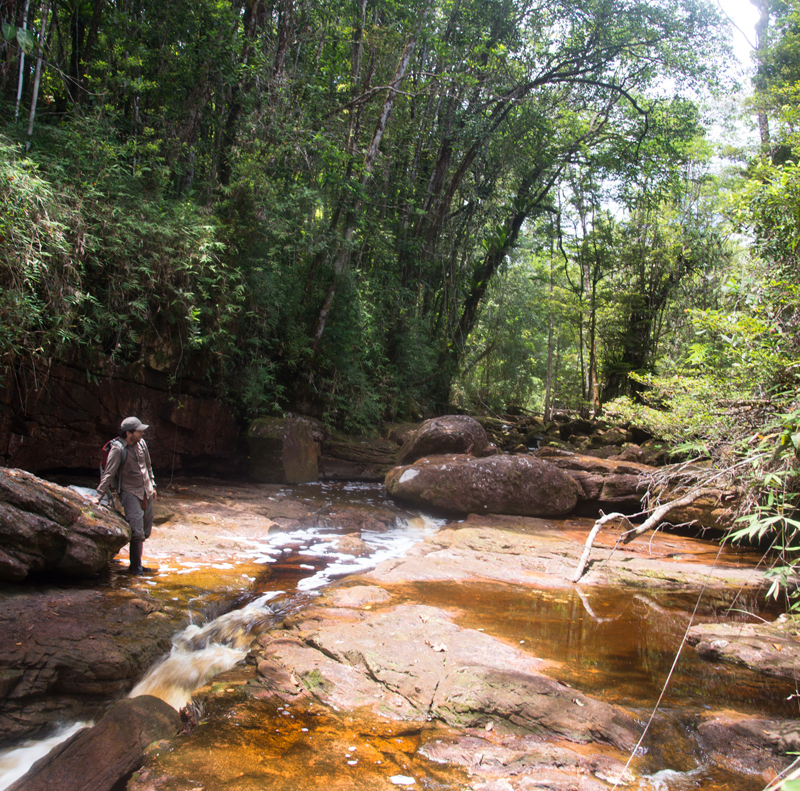An Expedition to Tafelberg: A Host of Habitats
Posted in Travelogue on February 14, 2014 by Fabian Michelangeli
Fabian A. Michelangeli, Ph.D., is an Associate Curator of the Institute of Systematic Botany at The New York Botanical Garden. His research focuses in part on the evolution, identification, and classification of neotropical plants. This is the last of four posts about an expedition last year to Suriname in northeastern South America.

Rain, isolation, and a unique geology, all factors that I have referred to in previous posts about Tafelberg, play very important roles in the amount of biodiversity on the summit of the mountain. However, another important factor is the great variety of environments on the summit, whose flat surface is the reason its name is Dutch for “table mountain.”
The top of Tafelberg is a very large, roughly triangular plateau. It measures about nine miles long by six miles wide and covers an area of some 30 square miles. The surface of the plateau looked homogenous as we approached the summit in the helicopter, but it quickly became clear upon landing that we would be able to explore many different vegetation types. Large areas of the summit are covered by tall forests filled with a close relative of the rubber tree. A network of small creeks crisscrosses the summit, creating hundreds of “islands.”
Also common on the summit are open areas, usually surrounded by dwarf forests or shrubs, where a small amount of water flows over the rocks and sand. These areas are particularly rich in carnivorous plants and many species found only on the summit. The black-water rivers of the summit are also the habitat for many aquatic plants; the black or reddish color of the water here is the product of the forests’ decomposing leaf litter, which makes the water rich in tannins.
Lastly, the apparently flat summit is really fractured by many canyons and tall walls that form unique habitats, usually very shady and humid, that are home to many plants found only on the summit of the mountain. These “endemic” species are of particular interest to botanists because several of them are likely to be new species that no one has documented. And because their range is so limited, they are also likely to be the species most at risk of extinction if their habitat is disrupted by climate change or other threats.

After almost two weeks of exploring a great variety of environments on Tafelberg, my graduate student Julian Aguirre and I were able to collect almost 300 plant samples. Our colleagues collecting aquatic insects, fish, and frogs were equally successful. To end our journey, we flew first by helicopter to the Kappel airstrip, then by small plane to Paramaribo and finally to New York. But in a way, the real journey is only just starting as we begin the long and interesting process of identifying all of the samples collected during our explorations.
The expedition to Tafelberg was funded by a grant to University of Kansas entomologist Andrew Short from the National Geographic Society.

